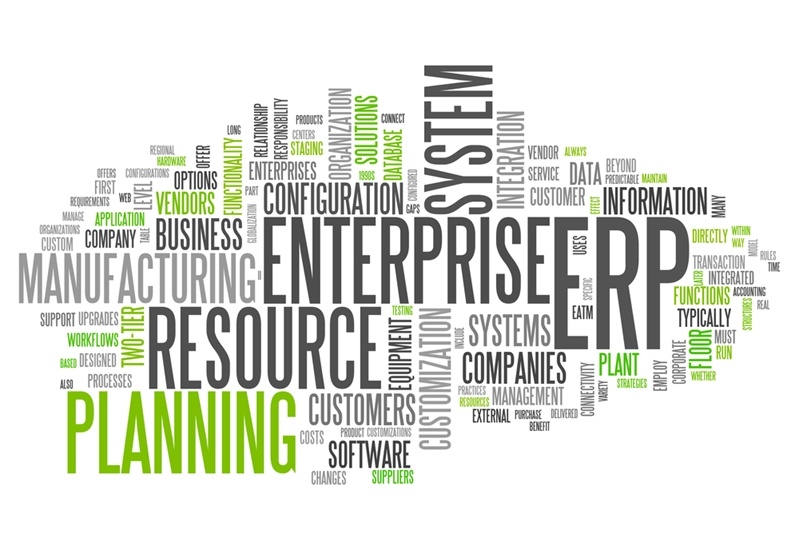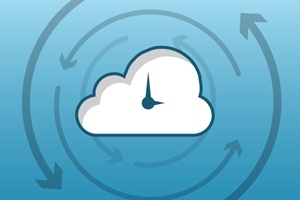The future is Cloud Financial Software
What does the ideal enterprise resource planning system look like for 2016 and beyond? ERP has changed quite a bit since its origins in the mid-20th century. It started off under the names of material requirements planning and manufacturing requirements, running on huge mainframes that required extensive support from technical teams. Then there was a shift toward software in the 1970s with the creation of ERP giants such as SAP, Oracle and JD Edwards.
ERP solutions eventually began targeting platforms such as Unix-based operating systems as well as the OS running on the midrange IBM System/38. Sophisticated financial capabilities that supported processes like order-to-cash and and pay-to-purchase became increasingly common throughout the 1980s and 1990s. More recently, many ERP vendors began pursuing service-oriented architectures that break down software into services that can be easily discovered across a network via standard protocols.
Certainly, the long-term evolution from legacy hardware to flexible software has been a positive one both for these vendors (who have seen rising revenue and signups) and for their customers, who have gained the convenience of being able to do in software what was once only possible to do with a mainframe. That said, many businesses are still far from an ideal ERP setup in 2015. Can cloud financial software provide a better way forward?
Where today's ERP systems fall short
Traditional ERP systems have a well-deserved reputation for being time-consuming to set up and manage, in addition to being expensive to maintain. Plus, even if teams get their ERP solution up and running, it isn't always a sure thing that it will justify all the effort and money that was expended along the way.
Indeed, the 2015 ERP Report from Panorama Consulting Solutions revealed that ERP-related projects (i.e., installations, migrations, etc.) are still major pain points for businesses everywhere. Surveying 500 ERP users, the study revealed that the average ERP initiative lasted more than 15 months and cost over $6 million. Other eye-opening details included:
- Almost 60 percent of all projects exceeded their budgets.
- Sixty-five percent of them overshot their timelines for completion.
- More than half of respondents reported obtaining fewer than 50 percent of the benefits they initially expected from these projects.
Despite the ERP progress narrative we sketched out earlier, such problems appear to have gotten worse, not better, in recent years. Over one-fifth of all ERP efforts were failures in the 12 months preceding the release of the Panorama report, a 5 percent rise from the previous year. The percentage of respondents who reported that they were happy with their ERP software dropped over the same time frame, from 76 percent to 69 percent.
The high costs and lengthy implementation periods of ERP projects are increasingly out of sync with the expectations placed on today's businesses. They are now widely expected to be "agile," i.e. able to respond quickly to challenges and changes in their industries by embracing technologies such as mobile devices and cloud computing.

Cloud ERP is growing in popularity.
For example, IT research firm Gartner has estimated that by 2016, one-quarter of Global 2000 organizations will have followed the lead of many small businesses/startups and technology firms in adopting DevOps, a new approach to IT that emphasizes agility and collaboration. Traditional ERP can put any business in the hole from the get-go as it tries to shift to a DevOps culture or simply ensure better ROI on its ERP software.
Big challenges remain for traditional ERP, but cloud financial software can help
At many organizations, it can feel like the outside world has moved on while the company ERP system has not. This feeling might settle in after running into common bottlenecks such as limited ERP support for phones and tablets, or complications with extensive customizations that make it tough to modify and integrate the ERP solution with other business systems and processes.
These difficulties and others have pushed many enterprises and SMBs to explore cloud ERP software. Gartner itself has predicted that the impact of cloud ERP will be significant enough to relegate all other ERP systems to the "legacy ERP" label by 2016. How could cloud ERP change ERP implementation, maintenance and ROI for the better?
Implementation
Start with the setup. As we noted earlier, it is common for ERP rollouts to take more than a year. But this is not the case with top-flight cloud ERP solutions. The service provider makes the entire process simpler than before by handling the supporting infrastructure and offering conveniently preconfigured settings and services. Intacct, for instance, has a straightforward Web services API that supports automated two-way communications with other cloud applications, without the need to resort to complex business logic.
"Implementation of cloud ERP is very quick compared with traditional ERP."
Maintenance
Costs are easier to manage under cloud ERP. A subscription packages all expenses - for the software as well as the infrastructure behind it - into a predictable monthly or annual rate. This billing arrangement is especially beneficial for SMBs, which may lack the money and personnel needed for coping with the often drawn-out process of traditional ERP implementation and maintenance. Cloud ERP is a time and money saver.
ROI
ERP success is never a given. Many organizations are working from a major deficit from day one, thanks to steep initial costs which then prove hard to recoup in the following months and years. Fortunately, the process with cloud ERP is less fraught with risk. Upfront costs are far less than they would be under a traditional approach. Plus, the added convenience of having software delivered from the cloud means that the organization as a whole spends less time simply keeping the ERP system running and more time focused on other activities. Teams could devote newly freed up time into integrating new cloud services into their ERP systems.
Is ERP in the cloud the future?
An ERP system is a big thing to update, even if the benefits of doing so are readily apparent. So the switch to hybrid and cloud ERP solutions won't happen overnight, but there is already some promising momentum.
PricewaterhouseCoopers has noted that licenses for traditional ERP systems have been declining since 2013. At the same time, SaaS alternatives are gaining steam: Investment in them could reach $78 billion by 2016 as more businesses realize what they bring to the table.
ERP has come a long way in its history, and it is still evolving. The current leap to cloud-based infrastructure and services opens many new doors for business of all sizes. The company ERP system no longer has to be a millstone around everyone's neck, and it can instead become an asset in a fast-paced world.




